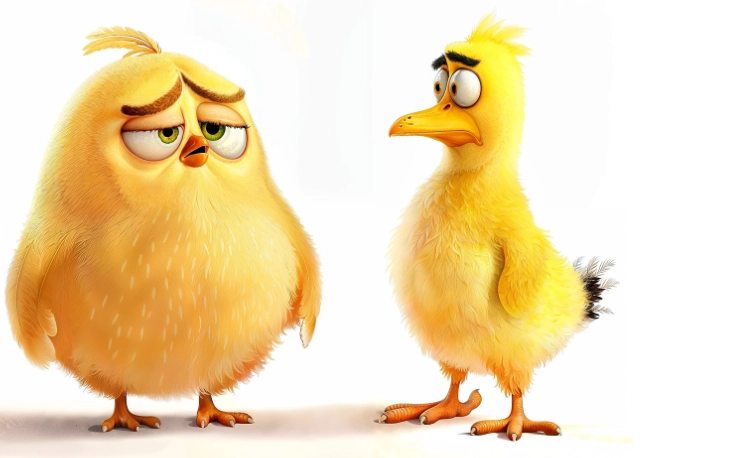Creating 3D characters that truly feel alive is a challenge every animator faces. It's not just about designing a good-looking model; it's about capturing emotion, movement, and personality in a way that resonates with the audience.
Whether you're working on animated films, video games, or commercials, lifelike characters can make or break the entire project. So, how do you bring your 3D characters to life? Let's dive into the 10 hidden secrets that professional animators use to transform their creations from mere models into dynamic, engaging characters.

1. Master the Basics of Character Design
Start with Anatomy and Proportion
Before you get into the fun, creative aspects of your character, you need to master the basics. A solid understanding of anatomy and proportion is crucial, even for stylized or exaggerated characters. When designing human or humanoid characters, knowing how the muscles, joints, and bones work together will help you create realistic movement and avoid awkward animations that break immersion.
Craft Distinctive Silhouettes
One of the keys to creating memorable characters is crafting unique and recognizable silhouettes. A great character design should be instantly recognizable, even in shadow. Think of iconic characters like Mickey Mouse or Batman—their outlines are unmistakable. Make sure your character stands out with a strong, clear shape that reflects their personality and role in the story.
2. Make Facial Expressions Your Secret Weapon
Unlock the Power of Key Poses
Facial expressions are where the magic happens. A character's face is their emotional anchor, and getting it right is critical. One tip: focus on creating key facial poses that convey a wide range of emotions. Think about how subtle changes in the eyes, mouth, or brows can completely change how a character is perceived.
Don't Forget the Eyes
The eyes are often called the "window to the soul," and in 3D animation, they can make or break your character's believability. Small details like eye movement, blinking, and micro-expressions (like a slight eyebrow raise) bring depth to your character. Study human eyes closely—how they dart, linger, and react to stimuli—and apply those details to your animations. Characters with “dead” or robotic eyes tend to feel lifeless, so adding some eye twitches or subtle directional glances can go a long way.
3. Body Language is More Important Than You Think
Nail the Weight and Balance
Every movement your character makes should convey a sense of weight and balance. Think about how a character's body would naturally respond to gravity, momentum, and friction. For example, when they lift a heavy object, their body should show strain and effort—slightly bent knees, tensed muscles, and slower movement. Paying attention to these details gives your character a sense of realism.
Use Gestures to Show Personality
Beyond just walking and running, it's the subtle gestures and posture shifts that really bring a character to life. A slight slump of the shoulders can indicate tiredness or defeat, while an upright, brisk movement can show confidence or determination. These small movements add a lot to how your character is perceived and make them feel more dynamic.
4. Give Hair and Clothing Their Own Lives
Animating Hair Naturally
Animating hair can be tricky, but when done well, it adds a whole new layer of realism to your character. Hair should move with the character but also have a life of its own. Wind, movement, and even slight motions like turning the head should affect how the hair flows. Using simulation tools that account for physics can help you achieve a natural look that avoids stiffness.
Clothing Dynamics Are Key
Similarly, clothing should react naturally to a character's movement. If a character runs, their clothes should ripple and sway, while tighter clothing should stretch and flex with the body. Simulating realistic cloth movement adds believability, but it's important not to overdo it—you want it to enhance the animation, not distract from the character's performance.
5. Realism Starts with Texturing
Create Realistic Skin
Realism isn't just about how characters move—it's also about how they look. Well-done textures can make your character feel alive. For human characters, this means paying attention to skin details like pores, wrinkles, and subtle blemishes. These imperfections give skin its lifelike quality, as no one's skin is flawless.
Add Personality Through Wear and Tear
Textures aren't just for skin—your character's clothing, tools, and accessories can tell a story too. Adding wear and tear, such as scuffs on boots, dirt on a jacket, or scratches on a shield, can give your character a history. These small details make a character feel more lived-in and relatable.
6. Lighting Sets the Mood
Lighting for Character Appeal
Good lighting can elevate your 3D character to new heights. Soft, well-placed lighting can make a character look warm and inviting, while dramatic shadows can make them feel mysterious or menacing. Lighting is a powerful storytelling tool, and how you light your characters can significantly affect how the audience perceives them.
Real-Time vs. Rendered Lighting
In video games, real-time lighting is crucial because the character moves through changing environments. For pre-rendered animations (like in films), you can control lighting more precisely. Understanding when to use real-time lighting versus more polished, rendered lighting can make a big difference, especially if your character needs to look good in different settings.
7. Sync Voice and Movement Seamlessly
Precision in Lipsyncing
Lipsyncing is where a lot of animations fall flat. To avoid this, ensure that the character's mouth movements are carefully matched to the dialogue. It's not just about opening and closing the mouth—different phonemes (sounds) should correspond to specific mouth shapes to make the speech feel natural.
Blend Sound with Body Language
When a character speaks, their whole body should be involved. A character shrugging while they say “I don't know” adds layers to the dialogue that enhance its believability. Try to think beyond just the mouth—how do gestures, head tilts, and body movements support the speech?
8. Use Motion Capture as a Tool, Not a Crutch
Capture Authentic Movement
Motion capture (mo-cap) is an incredible tool for animators, allowing you to record real human movement and apply it directly to your 3D characters. This gives your characters a level of realism that's hard to achieve with traditional keyframe animation. However, it's important to use mo-cap thoughtfully and blend it with custom animation to ensure the performance aligns with your creative vision.
Refine Mo-Cap with Keyframe Animation
Raw mo-cap data often requires refining to fit the character's design or to exaggerate certain motions for storytelling purposes. Combining mo-cap with keyframe animation allows you to add more personality and fine-tune the character's actions, blending realism with stylization where necessary.
9. Rigging is the Backbone of Character Animation
Create an Intuitive Rig
A good rig is the foundation of smooth character movement. It should be intuitive, giving animators control over every part of the character. Whether it's a simple walk cycle or a complex action scene, the rig should support fluid, realistic movement without creating unnecessary complications for the animator.
Pay Attention to Facial Rigging
Facial rigs deserve extra attention since they control the most expressive part of your character. A well-rigged face allows for a wide range of emotions and micro-expressions, which are key to making your character feel alive.
10. Iterate and Optimize for Different Platforms
Test, Refine, and Gather Feedback
No character animation is perfect on the first try. It's essential to test your animations thoroughly and gather feedback from peers or audiences. This iterative process helps you identify what works and what doesn't, leading to more polished and believable characters.
Optimize for Performance
Lastly, remember that your 3D character needs to perform well across different platforms—whether it's in film, games, or VR. Optimize your character's animation for smooth performance without sacrificing visual quality, ensuring it runs efficiently on various devices and systems.
Conclusion: Bring Your Characters to Life with Professional Techniques
Bringing 3D characters to life is both an art and a science. From mastering anatomy and facial expressions to refining motion capture data and optimizing rigs, it's the combination of technical skill and creative vision that makes a character truly compelling. At our studio, we specialize in creating dynamic, lifelike 3D characters that captivate audiences and elevate your project to the next level. If you're ready to take your characters to life, let's talk about how we can collaborate to bring your vision to reality!
Looking for a 3d animation company, we can help.
Call now +44 (0) 7798 834 159

